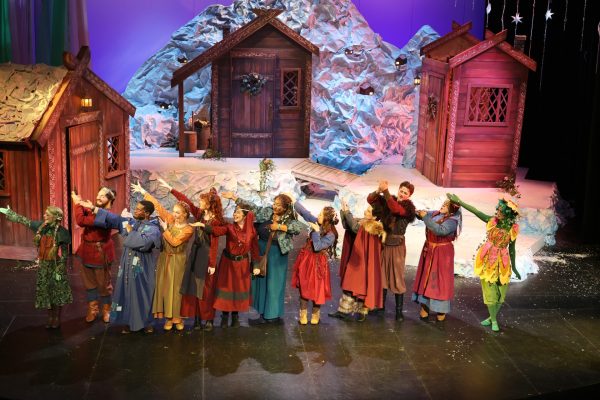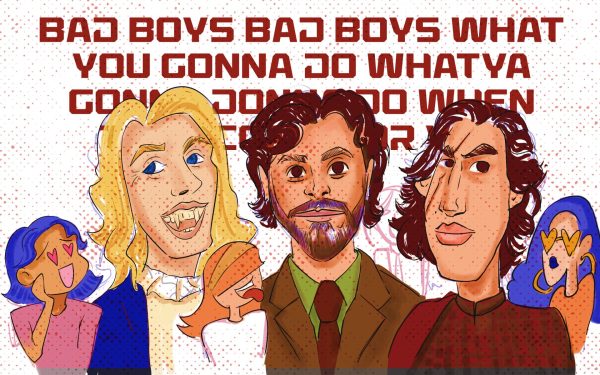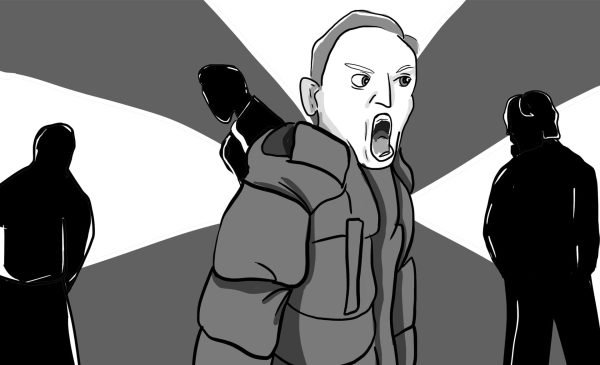May the fourth be with you: How “Star Wars” withstood the test of time
Maya Oclassen for The DePaulia
Despite nearly five decades passing since George Lucas’ “A New Hope” premiered in theaters in 1977, the “Star Wars” franchise has never been stronger.
As May the fourth arrives, the unofficial holiday strives to celebrateing the eccentric universe of “Star Wars,” allowing fans to reminisce on what pulled them into the franchise to begin with.
Housing over 11 films, seven television shows and 381 books, the universe of “Star Wars” continues to expand with each passing year.
Surprisingly, “Star Wars” was not always destined for fame. Initially crafted from the concept of a space opera, Lucas nearly missed his chance at immortalization due to his convoluted early drafts of “A New Hope” and outrageous expenses.
Yet, the stars aligned for Lucas, with “A New Hope,” despite its $11 million budget grossing more than $775 million worldwide and racking up 11 Academy Award nominations.
Nevertheless, the question still stands, how did “Star Wars,” a series based on laser swords, mystical religion and an orphaned farm boy, maintain its prevalence?
DePaul sophomore Bella Kovar believes the franchise’s unique plotlines and memorable characters allow the film series to connect to a vast range of individuals.
“It really is like nothing you’ve ever seen before,” Kovar said. “The originality behind the entire thing really contributes to how successful it is, I think. Talking robots (or droids), made-up planets, all different kinds of spaceships, princesses and creatures never before seen … all in one series.”
Amid Hollywood’s current obsession with expanding universes and interrelated plotlines, “Star Wars” holds credit for paving the way for this form of storytelling. Perhaps one of the franchises most defining aspects is the unique order in which Lucas created the film. The series initiated with “Episode IV,” a deliberate design choice by Lucas to allow the franchise to expand on the future and past.
“I think another thing that makes Star Wars so special is that it is tailored to so many audiences,” Kovar said. “Children, for example, can view it, but it’s also some sci-fi fun for adults. The humor included is painfully stupid that it makes you laugh.”
DePaul screenwriting and cinema production associate professor Brad Riddell explained how the film series’ plot structure secured a seemingly endless audience.
“It’s a classic tale of good versus evil and of freedom prevailing over oppression — which I find particularly appealing now,” Riddell said. “Every iteration of the franchise is also an underdog story. Our heroes are always outnumbered, outgunned, and they must triumph through sacrifice and ingenuity.”
Lucas’s inspiration for his riveting tale of triumphs and tragedy can be traced to “The Hero with a Thousand Faces” by Joseph Campbell, which analyzes humanity from a mythological and representative lens. Through Campbell’s sensational plot structure of the hero’s journey, Lucas enriched his character archetypes while crafting qualities audiences can relate to.
Yet, in an era of the continuous franchise, from “Harry Potter” to the Marvel Cinematic Universe, Riddell explained why “Star Wars” has maintained its popularity among new generations.
“It’s not so much that these later franchises copied ‘Star Wars’; it’s that ‘Star Wars’ made clear that working from and developing deep mythology is appealing to an audience — as it has been across cultures across the world as far back as we can look,” Riddell said. “All of these characters and the adventures they undertake are absolutely mythological in structure.”
While Marvel’s franchises may have a higher grossing of $25 billion than “Star Wars” $10 billion, it is essential to acknowledge that the Marvel Cinematic Universe has 28 total movies while “Star Wars” has 11.
Although it may seem like the films can be overshadowed in the wake of the rapidly expanding entertainment industry, “Star Wars” boasts something few current franchises can — nostalgia.
Riddell, who was 7 years old when “A New Hope” came out, expressed how the films and characters have stuck with him over the years.
“I love the dirty, old, broken-down universe it portrays, the characters it chooses and the themes it explores,” Riddell said. “Princess Leia became a role model for me, and was ahead of her time, especially in science fiction, where roles for women were small and problematic, if they existed at all.”
Individuals such as DePaul freshman Parveen Mundi explained why the franchise is so easy to enjoy.
“Everyone has their own vision of what the future will be like, and people are able to find pieces of their imaginations in the films, whether that is the space travel or lightsabers or something else,” Mundi said.
While unofficial “Star Wars” day may only come once a year, it is evident that the franchise and fanbase continue to prosper five decades later. As older generations continue to pass down the magic of “Star Wars,” it is no surprise that the movies have and will continue to stand the test of time.











